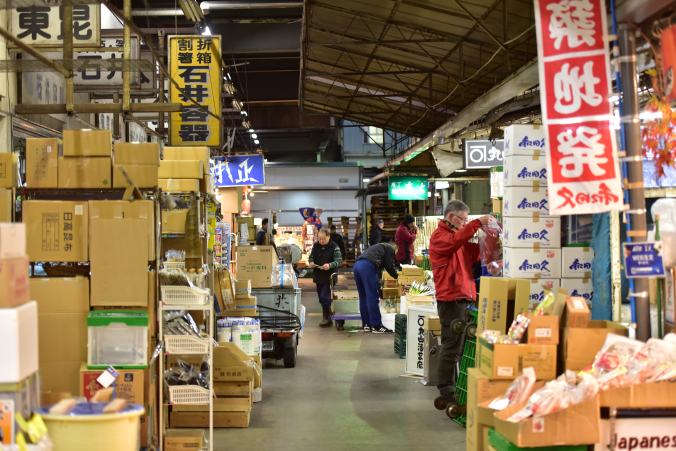
Tsukiji Fish Market is definitely not dressed up to impress tourists.
It’s our last week in Japan and we’re tackling Tokyo, district by district. We woke up at 4AM to jump on the first train out to Tsukiji Fish Market, the largest wholesale seafood market in the world. We opted not to attend the famous tuna auction, mostly because you have to arrive by about 2AM via expensive taxi in order to queue for the limited tickets available to tourists. Even without the tuna auction, though, the market is pretty spectacular.
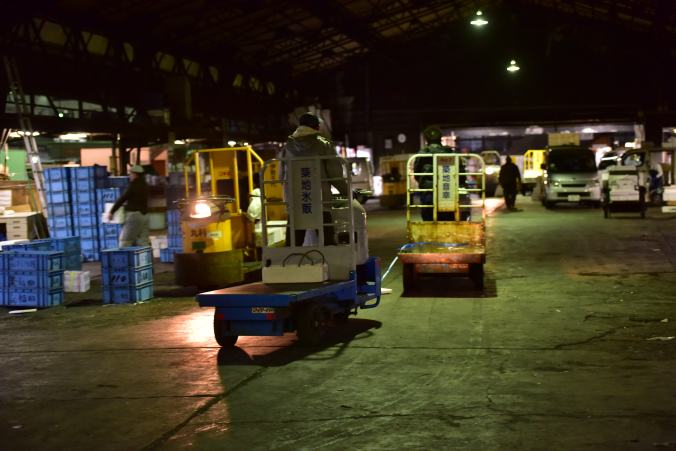
Please stay out of the way…these guys move fast.
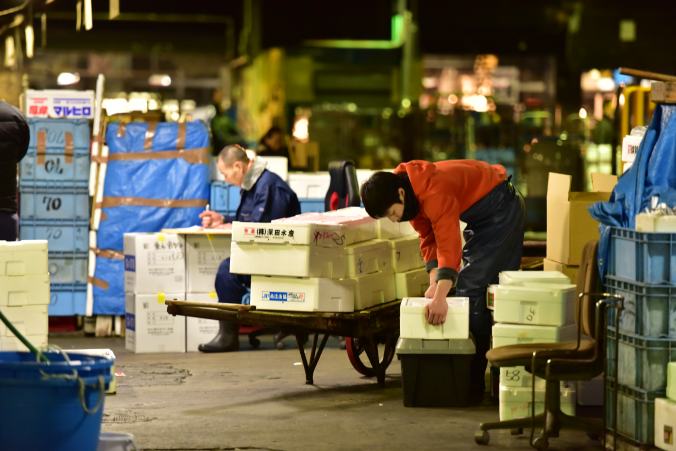
Seafood arrives here from all over the world. Most of the crew starts work between 2 and 3AM each day the market is open.
Tsukiji is made up of two markets – the inner market holds all the wholesale vendors and is off-limits to the public except for between about 5 and 6:30AM for those with tickets to the auction. The outer market is entirely open to the public and contains dozens of small restaurants, plus stalls selling kitchen equipment and other goods.
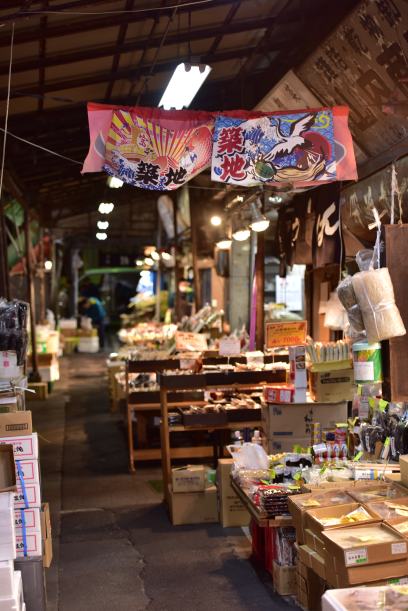
Stalls selling kitchen equipment and other sundries line the outer market.
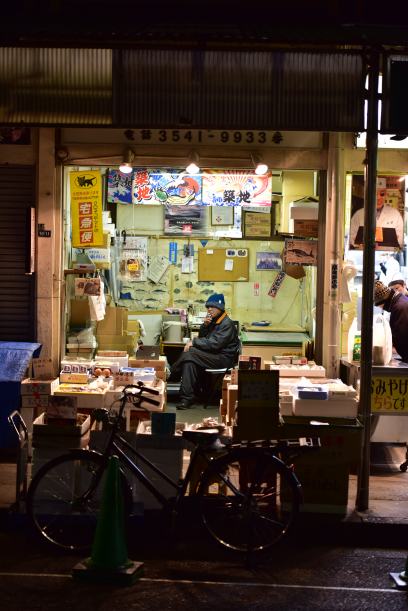
Of course you can still smoke here…we’re in Japan.
Make no mistake – this is a working market, and tourists are barely tolerated. The market has closed to tourists entirely on a number of occasions, thanks to safety concerns and complaints from vendors, but is currently open. You’re expected to pay close attention to the carts, forklifts, trucks and other machinery moving at high speed around the market, and basically stay out of the way.
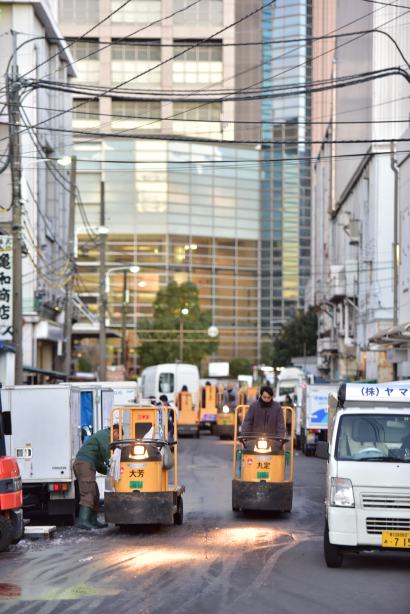
The grittiness of the fish market contrasts with shiny modern skyscrapers.
Tsukiji Market sits on prime Tokyo real estate just outside Ginza, one of the city’s fanciest shopping districts. Land here is more valuable than anywhere else in the world; as such, the market was scheduled to move in November 2016 in preparation for the 2020 Olympics. This was a highly unpopular decision, as many of these stalls (and their inhabitants!) have been in place for decades. In August 2016, the move was postponed; the reclaimed land where the market is to relocate is reportedly heavily polluted, and corruption allegations have been tossed around. Relocating a market of this size is a massive undertaking and it will be interesting to see if and when it actually occurs.
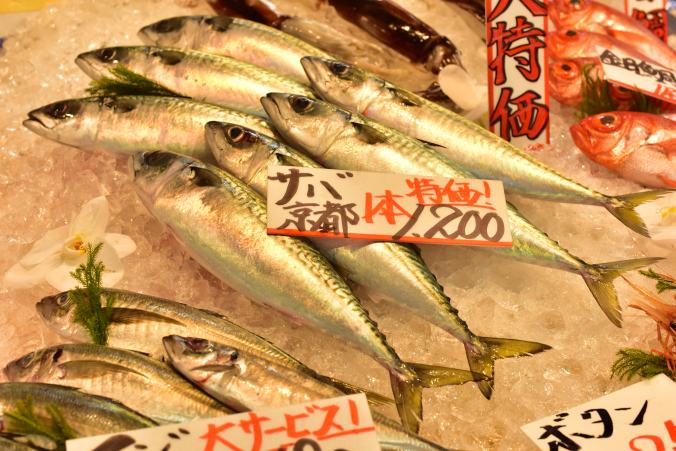
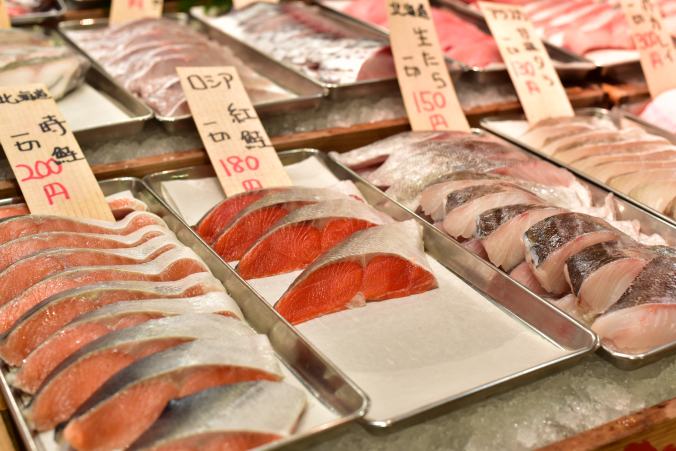
The fish for sale is always presented beautifully, and of course on plenty of fresh ice.
Tsukiji doesn’t just sell fish, though that’s what it’s best known for. There are stands with fruit, vegetables and exotic mushrooms too. Earlier on our trip I commented about the exorbitant cost of fruits and vegetables here; have a close look at the cantaloupes in the photo below – they’re priced at 1800 yen, or about $16 each. And they’re on sale! You can save if you buy the whole box of six for about $87. At a fancy food hall later that day, we saw melons nestled gently into little presentation crates and selling for about $150, and individual strawberries for $5 each. Perfect fruit are a popular gift here.

Want an orange? They’re between $3 and $4.50 each, depending on the variety.

An interesting array of herbs, flowers and other decorative garnishes.
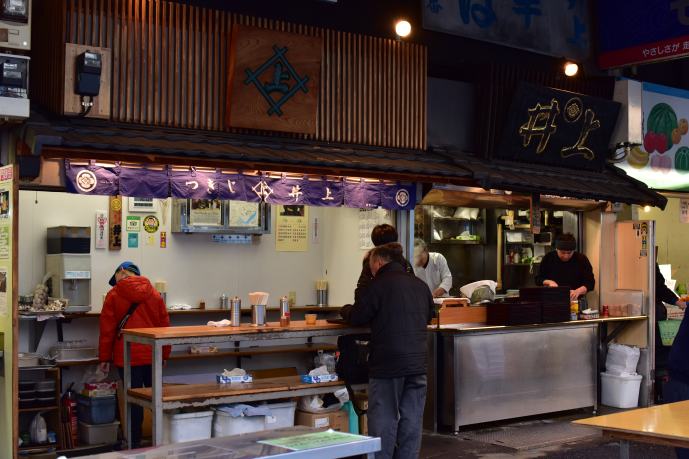
One of the numerous small “restaurants” that line the outer market. You order at the counter on the right from the chef or his assistant, and eat standing at the long table on the left. Dishes are washed in the gutter next to the street, and no, I don’t think the health department is bothered.
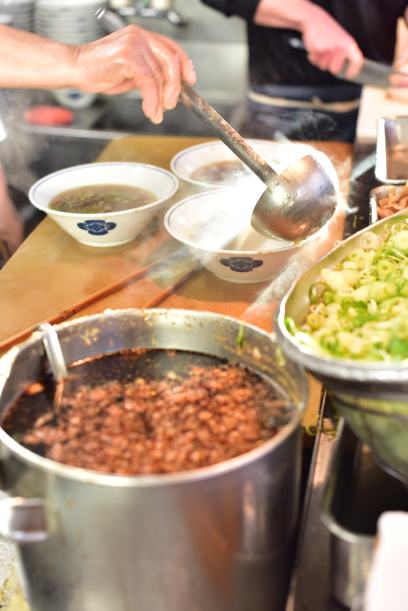
Ramen for breakfast on a chilly winter morning? Yes, please.
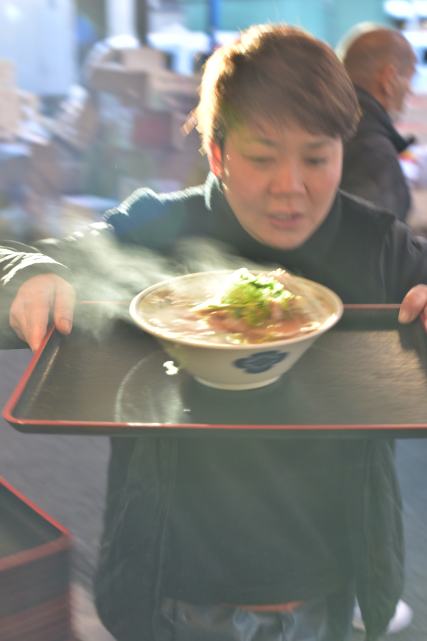
Indeed we ate ramen, not sushi, at the world’s most famous fish market.
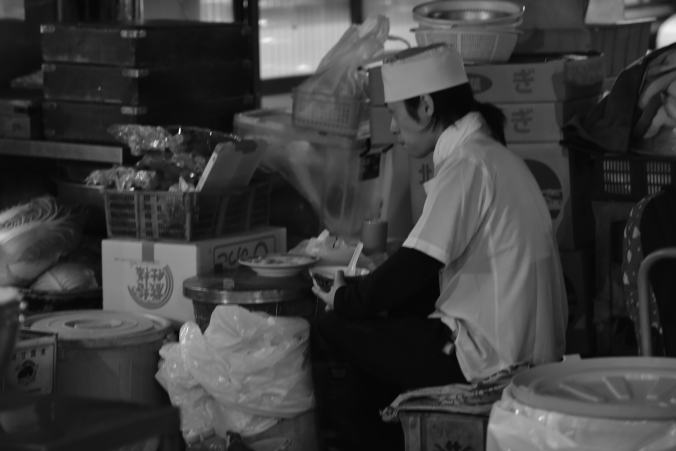
A quiet moment before a busy day.
Commercial fishing is a challenging topic, especially for the Japanese. On one hand, you have cultural traditions formed over countless generations in this island nation. On the other hand, it’s pretty clear that we’re running out of fish. Consider that Tsukiji Market alone handles over 700,000 tons of fish per year. That isn’t even a comprehensible number, but it’s definitely one that won’t continue. Many wholesalers and famous sushi chefs lament that the size and quantity of the tuna has decreased dramatically over the past twenty years; as oceanic pelagics, these fish can’t be farmed as other fish can. By some accounts, over 90% of the world’s fishing stocks are either fished out or nearly so; it’s estimated that at current fishing rates, fish and seafood will be completely gone by 2048.
This isn’t made any easier by the fact that – at least in the U.S. – we’re constantly told to eat more fish to improve our health. The U.S. imports over 90% of its seafood, much of it from highly compromised environments, so while fish may help your heart, eating more of it has an irrevocable environmental and social cost. And how do you even know you’re eating the fish you think you are? Much of it is mislabeled. Like most of our food system, this industry is heavily compromised too.
An issue as complex as the sustainability of modern fishing isn’t going to be solved in one post. But as always, friends, please spend your food dollars wisely and make your fish and seafood choices consciously and carefully.

Easy to find the market with landmarks like this!
Very interesting
LikeLiked by 1 person
Thanks for reading, and glad you liked the post!
LikeLike
Very well said Elizabeth!
LikeLiked by 1 person
Thanks, Jim. Definitely a complicated topic.
LikeLike
Ooooh! We’ll be there next Sunday!
LikeLiked by 1 person
Hi Mel & Suan, thanks for reading our blog! Not sure if you meant that you’d be in Tokyo next Sunday or specifically at Tsukiji, but just wanted to let you know that Tsukiji is closed every Sunday and most Wednesdays. Hope you enjoy your travels and please let us know if we can provide additional information. Best, Elizabeth
LikeLiked by 1 person
Thanks Elizabeth! Yes we mean we will be Tokyo from Sunday and through to 21st, though most of it will be in Toyama!
LikeLike
Very interesting – and great photos.
LikeLiked by 1 person
Pingback: Food politics book club | Finding Quiet Farm